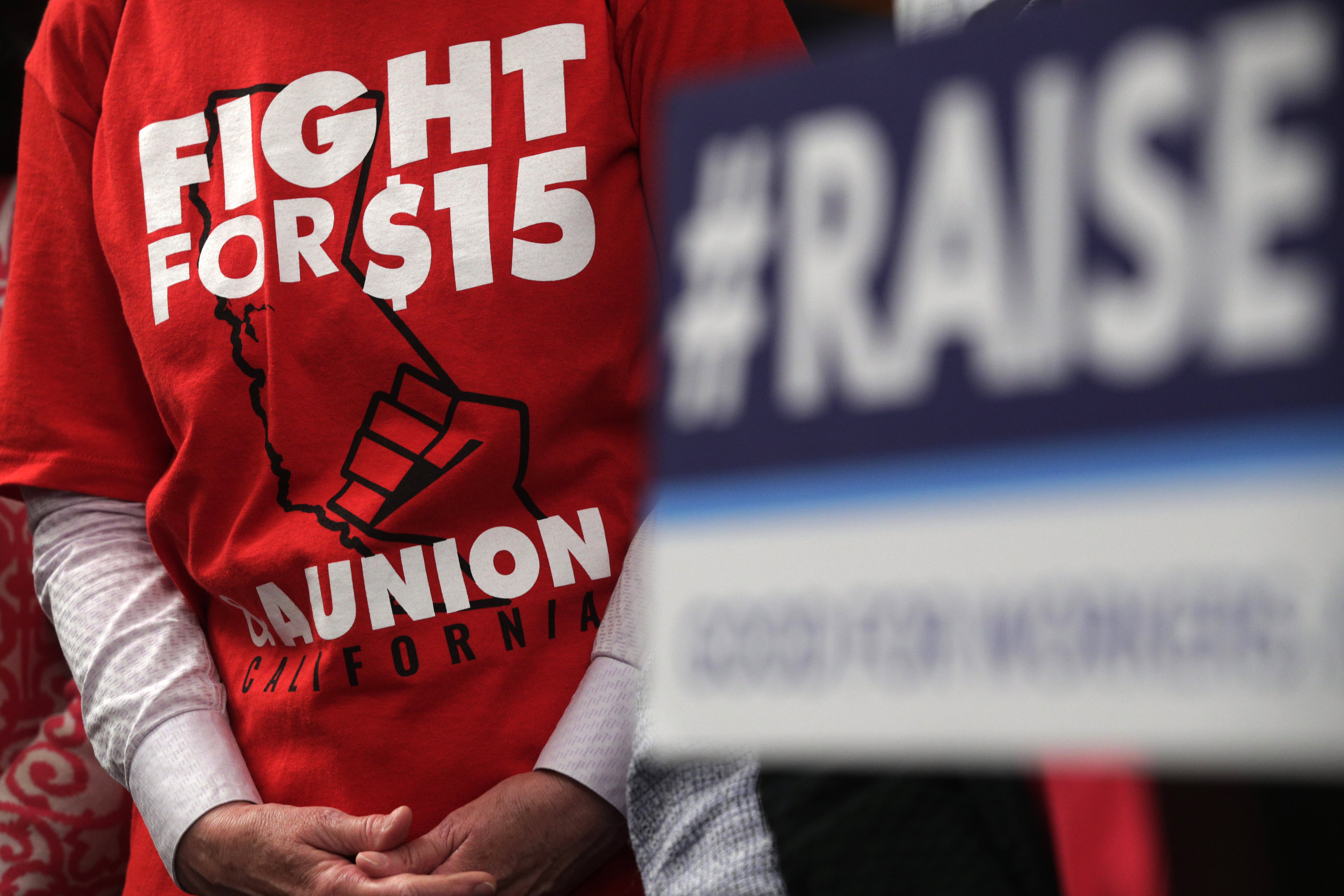An activist wears a “Fight For $ 15” t-shirt during a press conference ahead of the July 18, 2019 Raise the Wage Act vote at the US Capitol in Washington, DC.
Alex Wong | Getty Images
Raising the federal minimum wage to $ 15 an hour, as President Joe Biden proposed, would cost 1.4 million jobs over the next four years and lift 900,000 people out of poverty, according to a report by the Congressional Budget Office on Monday .
The impact on job listings is slightly greater than the estimated 1.3 million jobs in a 2019 report from CBO, an agency that provides budget analysis to Congress.
The figure has been contested by employment advocates, who cite the benefits of the increase and say companies will be able to afford the costs.
Biden acknowledged that the new federal wage floor progression plan is unlikely to pass the $ 1.9 trillion spending plan he is promoting in Congress, although he remains committed to the increase.
The CBO report estimates that the reduction in employment would occur by 2025 and would occur when employers cut payroll to offset rising costs.
Along with the reduction in employment, the federal budget deficit would increase by $ 54 billion over the next 10 years, a very insignificant level considering that the 2020 fiscal deficit totaled more than $ 3 trillion.
The pay for all workers would increase by $ 333 billion net, “an increase in the cost of labor for companies considerably greater than the net effect on the budget deficit during that period,” said the CBO report.
In the 2019 estimate, the agency said that the total family income would decrease slightly on the network.
“Higher wages would increase the cost to employers of producing goods and services,” said the report.
“Employers would pass on some of these increased costs to consumers in the form of higher prices, and those higher prices, in turn, would lead consumers to buy less goods and services,” the report concluded. “Employers, consequently, would produce less goods and services and, as a result, would tend to reduce the employment of workers at all wage levels.”
There is considerable disagreement about the negative impacts of the minimum wage increase, which has stood at $ 7.25 since 2009.
“Many studies have found that higher minimum wages reduce poverty, and a Census study found that wage gains for affected workers continue to grow in the years after the minimum wage increases,” according to a note from Goldman Sachs.
The company added that most studies “found only modestly negative effects of increases in the minimum wage on the employment of low-paid workers”.
Raising the minimum wage would result in higher spending on Medicaid for those who lost their jobs due to higher wages, while spending on Social Security would also increase due to higher wages.
On the other hand, CBO sees less spending on food stamps and child nutrition programs due to increases for low-income people.
However, those on the bottom step would also feel some impact.
The report predicts that of the 1.4 million workers displaced by the highest wages, half will leave the labor force completely by 2025.
“Young people with less education would be responsible for a disproportionate share of these job cuts,” said the report.
Proponents of employment cited several advantages in raising the minimum wage, ranging from raising the standard of living of low-income people to providing health benefits.
Raising minimum payment levels “would disproportionately increase household income on the basis of income distribution and significantly reduce the number of families in poverty,” said the Economic Policy Institute in a recent article.
Goldman estimated the chances of a $ 15 minimum wage going “low”, with the scenario most likely somewhere in the $ 10-11 range, with a gradual introduction.
